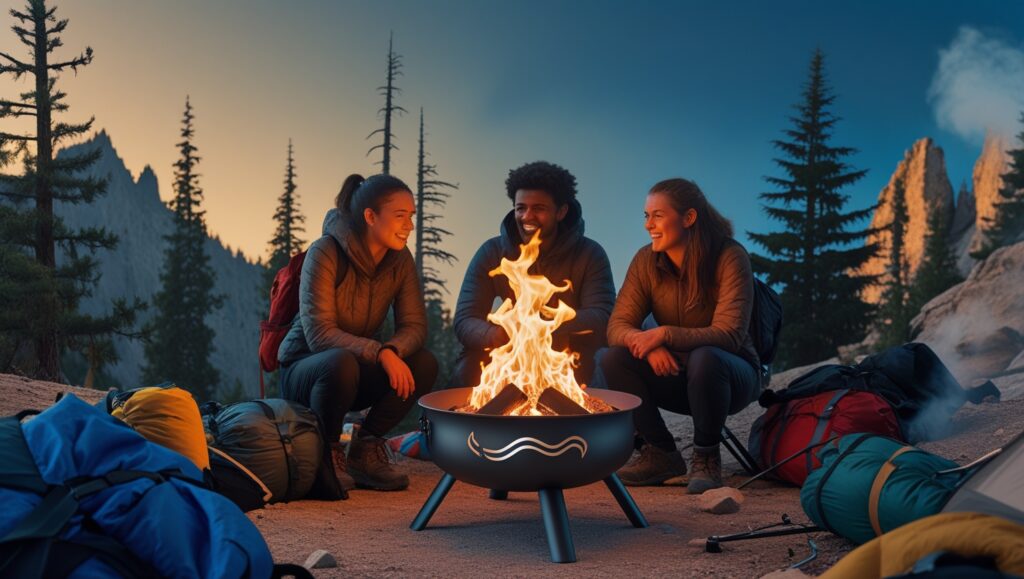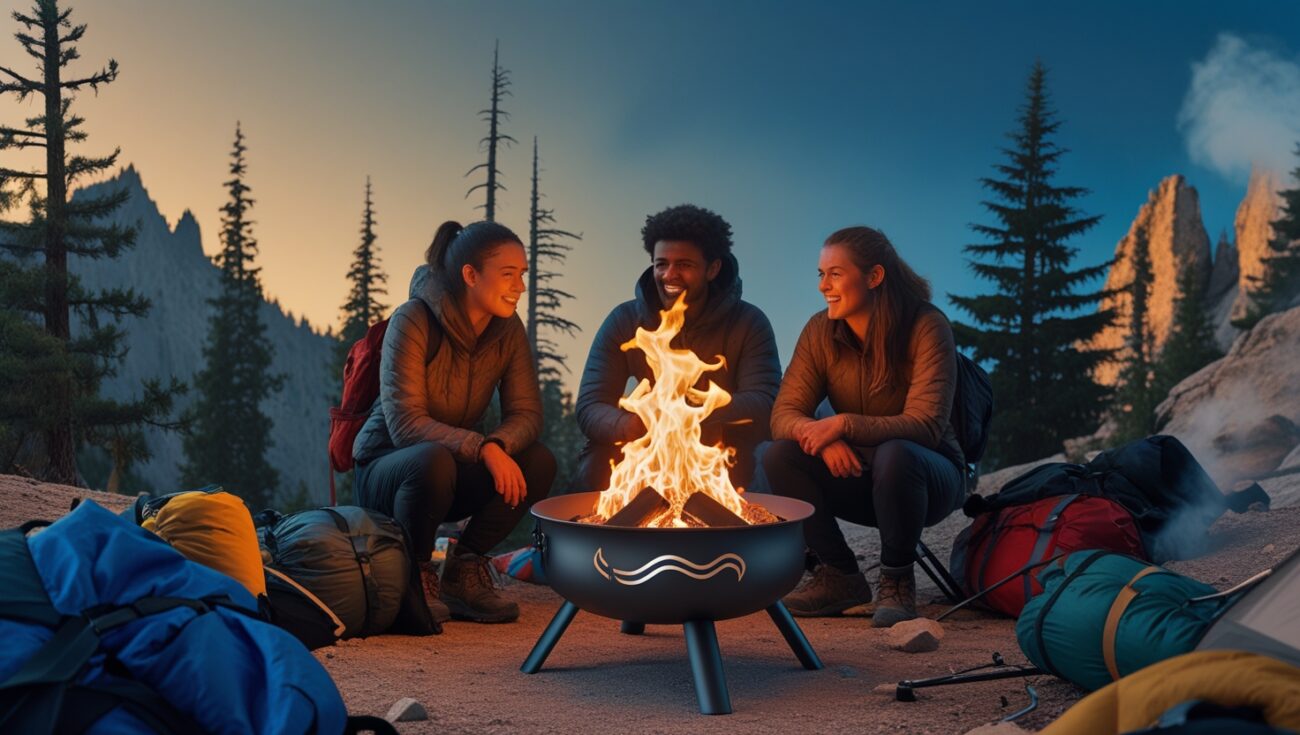Top Fire Pits for High-Altitude Camping (Windproof Picks)
Camping at high altitudes presents unique challenges—thin air, unpredictable weather, and gusty winds can make it difficult to enjoy a traditional campfire. That’s where windproof, high-efficiency fire pits come into play. These specialized fire pits are designed to perform reliably in challenging conditions, providing warmth and ambiance without the hassle.

Table of Contents
Why Choose a Windproof Fire Pit for High-Altitude Camping?
- Enhanced Combustion: Windproof fire pits often feature designs that promote efficient airflow, ensuring consistent flames even in thin air.
- Safety: Enclosed or shielded designs minimize the risk of sparks and embers, which is crucial in dry, high-altitude environments.
- Portability: Many models are lightweight and compact, making them easy to transport to remote camping sites.
- Versatility: Suitable for various fuel types, including propane, wood, and pellets, catering to different camping preferences.
CLICK HERE TO SEE THE ONES I HAVE!
Tips for Using Fire Pits at High Altitudes
- Fuel Selection: Opt for dry, seasoned wood or high-quality pellets to ensure efficient combustion.
- Wind Protection: Position your fire pit in a sheltered area or use natural windbreaks like rocks or terrain features.
- Altitude Considerations: Be aware that combustion efficiency can decrease at higher elevations; choose fire pits designed for such conditions.
- Safety Measures: Always have a fire extinguisher or water source nearby, and adhere to local fire regulations.
Investing in a windproof fire pit tailored for high-altitude camping can significantly enhance your outdoor experience. Whether you’re seeking warmth, ambiance, or a reliable cooking source, the right fire pit ensures comfort and safety in challenging environments.
I’ve learned from experience that fire behaves differently above 6,000 feet. The air is thinner, winds come out of nowhere, and what works at sea level might not even stay lit on a mountain ridge. That’s why I now only pack fire pits that are built for high-altitude conditions.
The first time I brought a regular fire pit to the Rockies, it kept going out. Even dry wood struggled to catch. That’s when I realized I needed something with better airflow design — especially those with a double-wall structure that retains heat and shields the flame.
Propane fire pits are my go-to for high-altitude setups. Unlike wood-burning ones, they offer a controlled burn even when oxygen is lower. The built-in regulators on quality propane pits really help manage consistent output despite altitude changes.
I also look for mesh-covered flame ports or recessed burners — they help block the wind without smothering the fire. These design tweaks make a massive difference when you’re out in unpredictable weather above the tree line.
What surprised me most is that some of the best-performing windproof fire pits are ultra-portable. They fold flat, come with their own carrying cases, and weigh under 25 lbs. That’s perfect for those long hikes to backcountry sites where every ounce counts.
I’ve hosted small group campouts where the fire pit doubled as a cooking station. If you’re camping at elevation, bringing a fire pit with a grate or grill attachment is game-changing. You don’t need to set up a separate cooking rig — it all happens in one place.
It’s also important to choose a fire pit with a built-in spark guard or ash catcher. With dry, windy mountain air, even one stray ember could be a hazard. Windproof designs help prevent flare-ups while keeping the fire safely enclosed.
Storage matters too. If you’re at a high-altitude site with no vehicle access, bulky gear becomes a burden. Many of today’s best fire pits collapse or fold without compromising on heat output, making them ideal for backpackers or vanlifers.
The beauty of wind-resistant fire pits is that they help you relax. You’re not babysitting a dying flame or worried about tipping logs. Instead, you can focus on enjoying the stars, sipping something warm, and being present with whoever’s around the fire.
If you’re camping with others, a low-profile pit that spreads heat outward instead of upward keeps everyone warm, not just the person sitting closest. I always recommend circular fire pits for this reason — they naturally radiate more evenly.
One underrated benefit of portable windproof fire pits is cleanup. Since they burn hotter and more efficiently, there’s usually less ash left behind. It’s one less chore when you’re packing out early in the morning.
After multiple high-altitude camping trips, I’ve realized that having the right fire pit isn’t just about warmth — it’s about confidence. Knowing your setup will perform in unpredictable conditions allows you to enjoy the wilderness without stress.
I’ve also found that pellet-burning fire pits work surprisingly well at high elevations. Pellets ignite faster and burn more consistently than damp logs or softwood, especially when you’re trying to start a fire in cold, windy conditions. Plus, they’re compact to pack.
If you’re bringing kids or first-time campers along, a windproof fire pit gives you one less thing to worry about. You won’t need to constantly hover over it or relight it every few minutes. The flame stays steady, and everyone can relax and enjoy the view.
One small but important tip: check local fire restrictions before you go. Even with the safest fire pits, some mountain areas may ban open flames during dry seasons. I always have a backup propane stove just in case — and sometimes just use the fire pit for heat and ambiance, not cooking.
In the end, the right fire pit turns your high-altitude camp from “survival mode” into a full outdoor experience. It’s the difference between huddling up early and actually enjoying a conversation, a cup of tea, or a hot meal under the stars — no matter how high you go.

